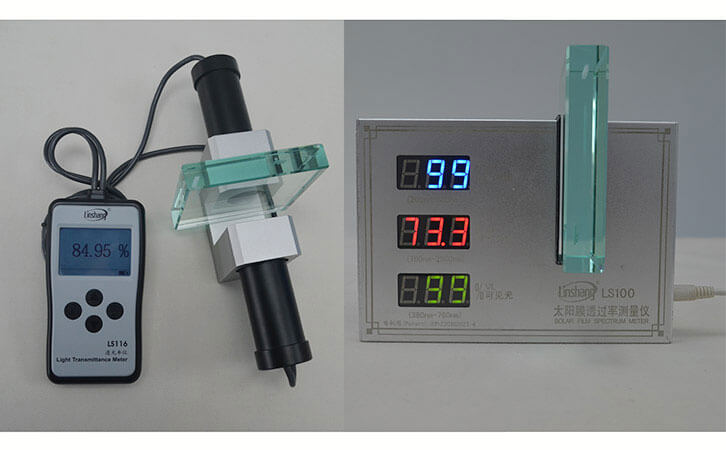What Light Transmittance Meter is used to detect the Thick Glass?
Linshang Technology has developed and produced a variety of light transmittance meters. The principles and light sources used in these instruments are not exactly the same. Which instrument is better for large thickness transparent glass?
First of all, we can understand how the transmittance comes from.
A light transmittance meter consists mainly of a light source and a receiver.
The receiver can receive all the light from the light source when there is no sample placed. This data is the original luminous flux.
After the light-transmitting material is placed between the light source and the receiver, the transmitted luminous flux received by the receiver is certainly less than the original luminous flux because the material reflects and absorbs a portion of the light.
The transmittance of the material is obtained by dividing the luminous flux of the material by the original luminous flux.
At present, the light source used in the light transmittance meter is mainly divided into two types: point light source and parallel light source. The light from the point source propagates in multiple directions, and also enters the material to be tested at different angles of incidence. The light passing through the glass is refracted. The thicker the glass, the larger the angle of refraction. We also call it the light-gathering properties. The thicker the glass, the stronger the light-gathering properties. However, if it is parallel light, it will enter the material to be tested at a vertical angle, and the light path of the normal incidence will not change.
Combined with the calculation method of the above light transmittance, it is not difficult to find that when using a point source instrument, the light-gathering properties of the thick glass causes the luminous flux received by the receiver to increase, and the transmittance of the final test is also large. When we use the light transmittance meter with a parallel optical path tests thick glass, the transmitted light does not diverge around due to the refraction of light. Therefore, it is better to use a light transmittance meter with a parallel optical path for measuring the transparent glass with large thickness.
As can be seen from the above figure, testing the same large thickness of transparent glass, using the old light transmittance meter with the point light and the LS116 light transmittance meter with a parallel optical path, the transmittance data obtained greatly differs. The light transmittance data obtained by the point source instrument has even reached 99%, this data is obviously inaccurate. Because the inside of the light tube of the LS116 light transmittance meter has been specially modified, it can emit nearly perfect parallel light. This design ensures data accuracy while testing large thicknesses of clear glass.
In summary, for the measurement of high-transparency transparent glass, we recommend the LS116 high-precision light transmittance meter with parallel light path. In addition to this instrument, the LS183, LS110 and other light transmittance meters that also use parallel optical path design are also worth considering.
- Light Transmittance Meter Test Frosted Glass
- Professional Light Transmission Meter for Light-shielding Film
- High-precision light transmittance meter for testing light guide plate
- How to Test the Smoke Transmittance?
- Transmittance Measurement of Plastic PC
- The Operation Method of Front-windshield Transmittance Meter
